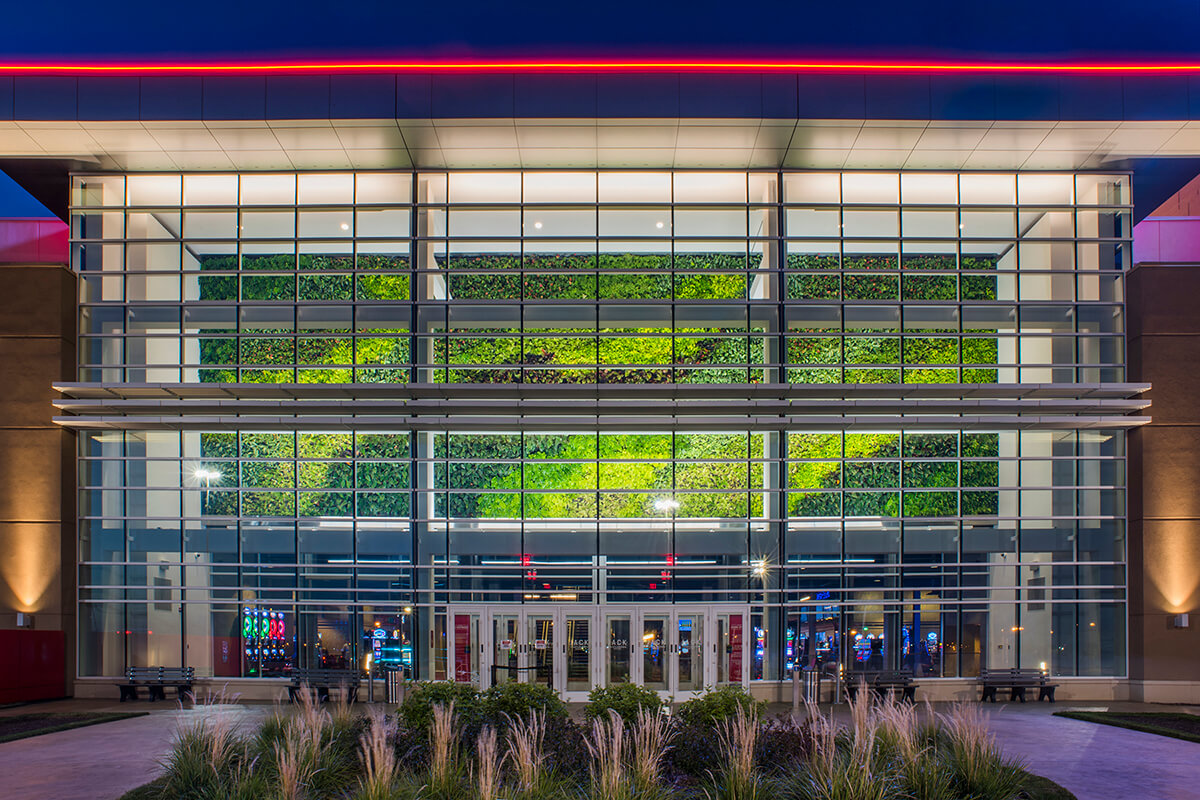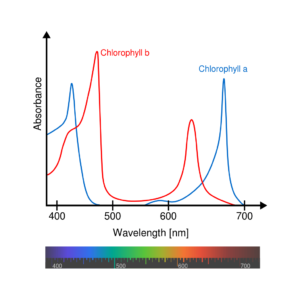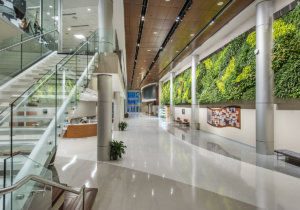“Nature’s beauty is a gift that cultivates appreciation and gratitude.” – Louie Schwartzberg, Director
Green walls are a popular component of building design across many market sectors. Also known as a living wall, these vertical gardens tout a variety of benefits, including energy conservation, sound dampening, and air quality improvements. They also bring natural beauty to the indoors, even in spaces without windows.
Electric light and daylight play an important role in supporting a green wall that thrives for years to come. Lighting designers have several factors to consider when illuminating these walls. David J. Seok, Associate IALD, Project Manager in The Lighting Practice’s New York office, addresses these considerations and the challenges below.
How do lighting designers determine which lighting solutions will support plant growth?
When developing lighting solutions for a green wall, we collaborate with living systems experts like Furbish and EcoWalls. These consultants choose the plant life that will be incorporated into the wall and outline the spectral distribution required to support the plants. Spectral distribution refers to the radiant power emitted by a light source at a given wavelength.
The chart [on the right], illustrates how red and blue wavelengths support plant growth by optimizing chlorophyll a and chlorophyll b absorption. This is why many LED grow light sources used in horticultural lighting look purple or magenta. As architectural lighting designers, we strive to balance aesthetics with other code or plant life requirements. A magenta light source illuminating a green wall in an interior space is not ideal. Fortunately, more manufacturers are providing white light sources that also provide these wavelengths.
The Lighting Practice recently collaborated on two green walls with Furbish during a renovation project at the historic JACK Thistledown Racino. Both green walls were very large and had different electric light requirements to support growth. Renovations at the existing entry included an expansive curtainwall system that provided enough daylight for plant growth on the 2,300-square-foot green wall. TLP supplemented this wall with LED lighting at night, making it visible through the glazing. The plants are able to “rest” during this time, as the nighttime lighting utilizes wavelengths that are not used for making chlorophyll.
Meanwhile, the 2,400-square-foot green wall by the new parking garage entry had minimal daylight exposure. TLP specified two lighting systems to support the green wall’s plant growth. Ceramic metal halide lamps with the required spectral distribution were used during the day to promote growth and again LED lighting at night to illuminate the wall during the plants’ rest cycle.
The Lighting Practice also worked on an interesting project with EcoWalls at the University of Delaware STAR Tower in Newark, Delaware, where the team designed two different green walls to support two different purposes. One was to improve well-being through visibility and the other through interaction. TLP collaborated with EcoWalls on the 1,000-square-foot green wall, designing a lighting system to support 5,000 plants and 25 different species. The smaller and more physically accessible wall was placed beneath the main display. EcoWalls designed integrated lighting into the Chef’s Garden to support herb growth. University of Delaware students can pick herbs from the garden for use in the demonstration kitchen. Looking at the photo, you can see how different the quality of light is for the different kinds of plants.
Are there fixtures lighting designers typically use when illuminating green walls?
Fixture selection and placement are important when designing a lighting system for a green wall. The walls that we provide lighting for are often large installations that are rather tall – some of which are more than 20 feet high – and often, the light source is exclusively installed on the ceiling. As green walls typically require upwards of 150 foot-candles, our fixture choices need to have good optical control. TLP frequently specifies point source fixtures like adjustable trackheads and recessed adjustable multi-lamp fixtures because they provide the necessary optical control. Linear wallwashers are a possible solution for low height areas (under 10’-0”), but the further away the source is installed, the more fixtures are needed to provide the plants near the bottom of the wall with adequate lighting.
With larger walls, meaning those that are greater than ten feet, we typically stagger point sources high and low; one row to target the upper portion of the wall with a wider distribution, while another row targets further down the wall with a narrower distribution.
What are some of the challenges associated with illuminating green walls?
Larger green walls present the greatest challenge because of the high light levels required. Typically, adding uplighting is not an option in these scenarios, as the unnatural direction of light can be detrimental to the plants’ health. The solution is ongoing communication and collaboration. As lighting designers, it is really important to work closely with the green wall consultant and the design team to ensure the needs of the plants are met from top to bottom.
Also, as mentioned earlier, plants need a certain amount of time in darkness as part of their growth cycle. This requirement can become a challenge in spaces with 24-hour operations. Within those buildings, the client may prefer to keep the green wall lit all day and night. Our solution has been to create a separate layer of light, with strategically chosen wavelengths, that provide attractive visual illumination but still allowing for the plant to rest. This creates two layers of lighting; one turns off and the other stays on at certain times of the day.
As LED technology advances one fixture may be able to provide the required wavelengths to support plant growth and meet our clients’ aesthetic preference of white light. This may be achieved through one fixture that can be programmed to have different spectral distributions. We are already seeing manufacturers that are able to provide this level of control in their luminaires, altering specific wavelengths while visually maintain a consistent color temperature.
Green Walls for Human Well-being
A large part of achieving human well-being is strengthening our connection to nature. Programs like LEED, WELL, and Fitwel are incorporating nature into their design goals. Green walls are an effective solution for bringing plant-life indoors and adding a natural element to a space that would not normally have one.
As outlined in this article, designing a green wall that will thrive requires close collaboration with experts from several professions. Together their specialized knowledge will produce a meaningful design element that supports human well-being and brightens our clients’ experience.





